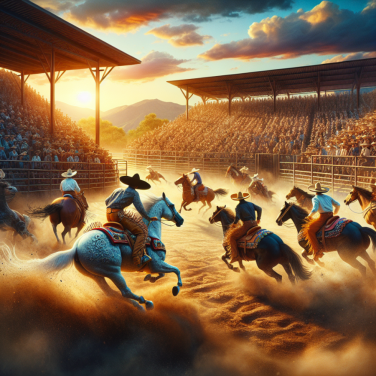Uncovering the Origins and Evolution of Shinty
Shinty, or camanachd in Gaelic, is a sport deeply woven into the Scottish cultural and historical fabric. The origins of shinty can be traced back over a thousand years, making it one of the oldest games in Scotland. The sport is often linked to the Irish game of hurling, but it has evolved to have its own unique characteristics and rules. Its roots are believed to be shared with other stick and ball games played during the medieval times across Europe, such as bandy in Scandinavia, and the various forms of 'folk football' that were common across the British Isles.
The evolution of shinty is a tapestry of local customs, with each Scottish community having its own variation of the game. There were no standardized rules until the late 19th century, meaning games varied greatly in terms of player numbers, playing surfaces, and equipment. Traditionally, matches were played during community events, such as fairs and New Year celebrations, often involving entire villages and could last for hours or even days.
The rich history of shinty is also reflected in its significance in Scottish legendary tales and folklore. The sport is said to have been played by the mythical Fianna warriors of Gaelic mythology, and some historical accounts even link shinty to training regimens for ancient Scottish warriors.
A pivotal moment in the history of shinty came with the formation of the Camanachd Association in 1893. This governing body was crucial for the standardization of rules and formalizing competition structures. One of the most significant outcomes was the establishment of the Camanachd Cup in 1896, which remains the sport's premier competition, analogous to the FA Cup in English football.
In the early days of organized shinty, the sport was almost exclusively played by men. However, in more recent years, there has been a significant increase in women's participation. The Women's Camanachd Association was founded in 2001, reflecting the growing interest and leveling of the playing field, with women's shinty now thriving in Scotland.
The sport has survived through many challenges, including being effectively banned during the First World War when play was seen as unpatriotic. Instead, many shinty players served in the military, with some even forming teams and playing matches at the front. These war-time experiences had a profound impact on the shinty community, with many players not returning home.
Read also:
Exploring the Rich Cultural Tapestry of Charreada
The Modern Game: Shinty's Enduring Appeal and Cultural Significance in Scotland
Shinty, an ancient sport deeply woven into the fabric of Scottish culture, continues to captivate audiences with its unique blend of skill, speed, and tradition. Known in Gaelic as camanachd, shinty boasts a history that dates back over a thousand years and remains a testament to Scotland’s rich heritage. Despite the onslaught of modern sports and entertainment, shinty has not merely endured but thrived, maintaining its appeal across generations and communities throughout Scotland.
At the heart of shinty’s modern game is its ability to bring communities together, fostering a sense of identity and pride. Matches are often community events, with local teams supported fervently by their hometowns. These shinty matches are more than mere competitions; they are community celebrations that often include traditional music, dance, and a gathering of families. This sense of community has been pivotal in preserving shinty’s relevance in an age where numerous sports compete for public attention.
Shinty clings to tradition while embracing modernity. Teams are now employing contemporary training techniques and strategies to enhance player performance. However, the essence of the game – with its minimal equipment and reliance on natural grass pitches – remains unchanged. This juxtaposition of past and present is part of what makes shinty uniquely Scottish, a sport that honors its history while looking toward the future.
The cultural significance of shinty extends beyond the field of play. It is often integrated into educational programs, teaching children about cooperation and Scottish history. This educative role not only perpetuates the sport’s physical aspects but also ingrains its cultural importance in the youth. Through school programs and youth leagues, shinty instills values like sportsmanship, teamwork, and cultural pride.
Moreover, shinty has become a cultural ambassador for Scotland. International shinty competitions and collaborations with other Celtic regions, where similar sports are played, have served to share Scottish tradition and culture globally. These exchanges reinforce not just the sporting connections but also underline the importance of maintaining and celebrating cultural distinctiveness in a globalized world.
Participants and supporters alike often view shinty as more than a game; it is a living part of Scotland’s cultural tapestry. Tales of legendary matches, teams, and players are passed down through generations, much like the country’s music and folklore. The stories associated with shinty games, and the places where they are played, enhance the richness of Scotland's cultural landscape.




